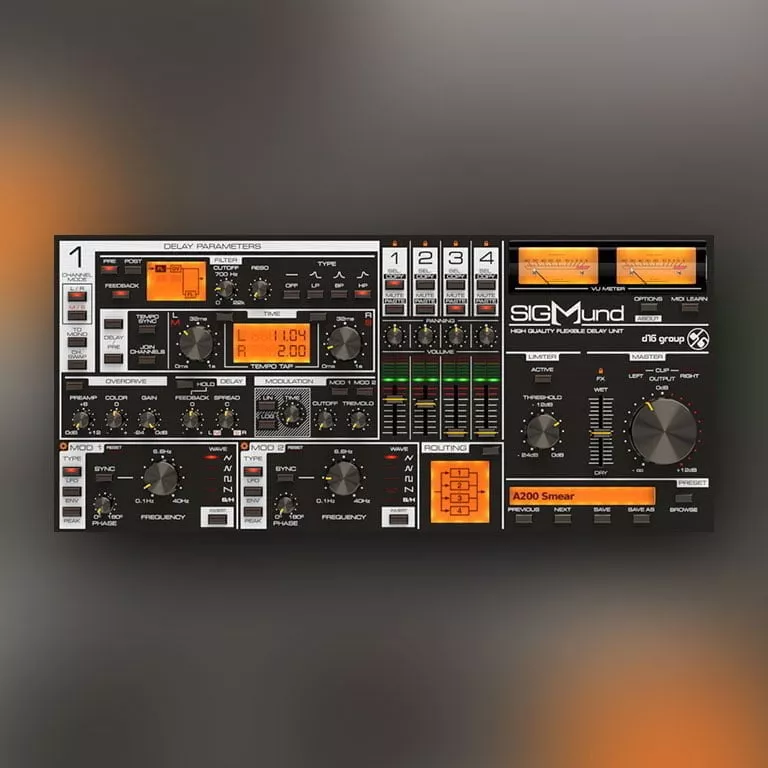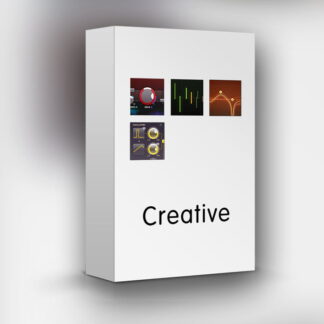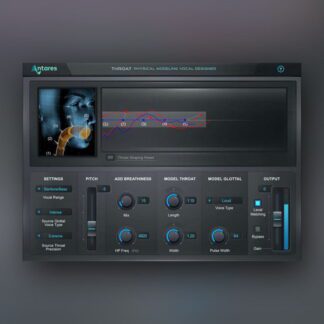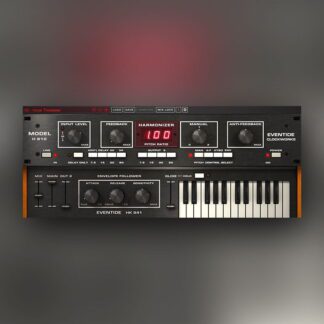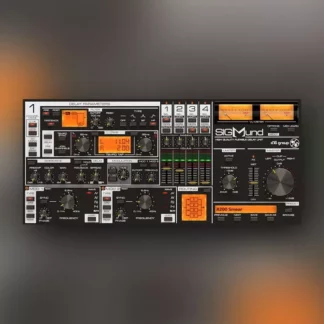
An incredible degree of sound-shaping freedom
Sigmund is far from just another delay: it consists of four discrete delay units, each with its own, independent set of parameters offering an incredible degree of sound-shaping freedom. There’s an ancient saying, often attributed to Aristotle: The whole is greater than the sum of its parts. With Sigmund, this is especially true: each of the delay lines has complementary modules built in, independent from the feedback loop:
- Multi-mode Filter (can work either in or outside of the feedback loop)
- Overdrive module
- Amplitude modulator (for tremolo effects)
But that’s not all: Sigmund has two general-purpose Modulators which can be used to auto-modulate some of the delay lines’ internal parameters. There are three different modes a Modulator can operate in:
- LFO – Used subtly on-time parameter can delicately bring a sound to life, to add gently flowing, modulated warmth reminiscent of the analogue delays of yesteryear. At extreme settings, the LFO is capable of twisting the input signal utterly beyond recognition and into what you might expect transmissions from an alien civilization to sound like!
- Envelope – In combination with built-in Transient Detector gives you a very powerful tool; when applied on amplitude allows to freely shape sound’s dynamics to control how it blends in the whole mix..
- Peak follower – It’s a must-have for a Modulator; nothing else will do such expressive wah-wah effect, when filter cutoff is influenced by. Surely in the hands of skilled sound designer, it will have many other applications beyond that.
This all adds up to an immensely powerful architecture, the potential of which can be explored nearly endlessly and often with hardly predictable outcomes.
Flexible Routing
Sigmund’s four delay lines can be interconnected with each other in practically every manner possible. The plugin offers a choice of nine different routing topologies which give access to completely new dimensions of sound creation. For example, say you have your delays currently running in parallel but would like to have a cascade of serially connected delays instead: you can reconfigure them instantly by choosing your desired algorithm with just a click of the mouse. For even greater convenience when working with Sigmund, the output signals of each of the four delay lines are combined in a special, purpose-built internal mixer to ensure a seamless transition between algorithms and greatly speed workflows.
Outstanding Quality
The signal processing solutions D16 chose to implement in Sigmund have allowed us to achieve an unprecedented level of audio quality! A signal being routed sequentially through each processing block suffers no loss in fidelity from one to the next and no undesirable artefacts are introduced as is so often the case with some of the more widely used but inferior solutions. With Sigmund, each delay line is absolutely alias free: the only sonic colourations you’ll ever hear are the ones you’ve intentionally created.
The signal path design process that went into Sigmund has been zero-compromise from beginning to end: in fact, the sound quality is so high, the processing so pure that it’s possible to work with even the smallest delay times, even down to one-tenth of one millisecond with zero artefacts emerging. Thus, it’s possible without any tricks or half-measures to use a single delay line not only as a traditional delay effect but also as a chorus or flanger and in some of the highest audio quality theoretically possible!
Intuitive Design
Sigmund’s user interface has been designed from the ground up to be as intuitive as possible. Everything is presented as if on a silver (or brushed aluminium) platter, cleanly and clearly laid out and with instant access to each section and it’s parameters. A convenient preset browser allows for quick auditioning of the extensive, included factory preset library. This, in combination with a novel system of ‘padlocks’ for locking individual sets of parameters when changing presets, allows you to zero in on the desired effect with extreme efficiency. In skilled hands, these features become powerful weapons.
Multitude of Purposes
Sigmund can be effortlessly applied in nearly any configuration in the studio. It can be used as an insert effect for an instrument or bus channel, or as a versatile send effect with the help of a parameter lock that allows for auditioning presets without having to readjust the wet/dry mix with each new selection. The plugin can be used universally not only as a delay, but also as a:
- Tremolo
- Filter
- Limiter
- Distortion
Each of these possibilities above is a result of the direct usage of the various modules that D16 have at their disposal in the processing path. But also indirectly, depending on parameter values, there are other possibilities, including:
- Chorus – from small delay time values
- Flanger – from small delays with feedback added
- Spatializer – by applying delays on delay lines with different signal domains (M/S or L/R) and phase shifts between the channels
- Mastering / Bus dynamic processor – Setting modulators working as transient triggerable envelopes affecting signal’s amplitude it’s possible to control the dynamics very precisely.
Despite all of the facts presented in this brief description, you get much, much more, because these are only examples of Sigmund’s most basic operation. With the benefit of an incredibly flexible signal routing system, these simple strategies can be freely shuffled and combined for practically unlimited sound shaping depth. Things can go from basic to very advanced indeed before you know it, and more easily than you perhaps considered possible. And, all this in the highest available audio quality! This is only the start of wonderful sonic journey you’re about to embark on…
Features
4 independent delay lines, each with:
- Multimode filter
- Overdrive unit
- Separately configured pre and delay times with optional Tempo sync.
- Delay times down to 0.1ms
- Tap function for unsynchronized delay line
- Selectable channel mode (L+R or M+S)
- Stereo spread
High-quality delay line algorithm
- No aliasing or artefacts
- 4 selectable grades of processing quality
Two multipurpose Modulators:
- Selectable Modulator type (1 of 3 available):
- LFO
- Tempo synchronization as an option
- 6 Invertible waveforms
- Stereo Phase shift
- ADHSR Envelope
- Peak Follower
- MIDI retriggering for LFO and Envelope type modulators
- Transient detector for retriggering LFO and Envelope type modulators
Additional Features:
- Flexible Routing (9 possible topologies)
- Convenient mixer
- Master Limiter
- Presets
- Over 300 factory presets
- Advanced, file-based preset browser
Miscellaneous:
- Advanced MIDI learn
- Parameter mapping for VST / AU / AAX automation with default map included
- Independent quality settings for real-time and offline modes

